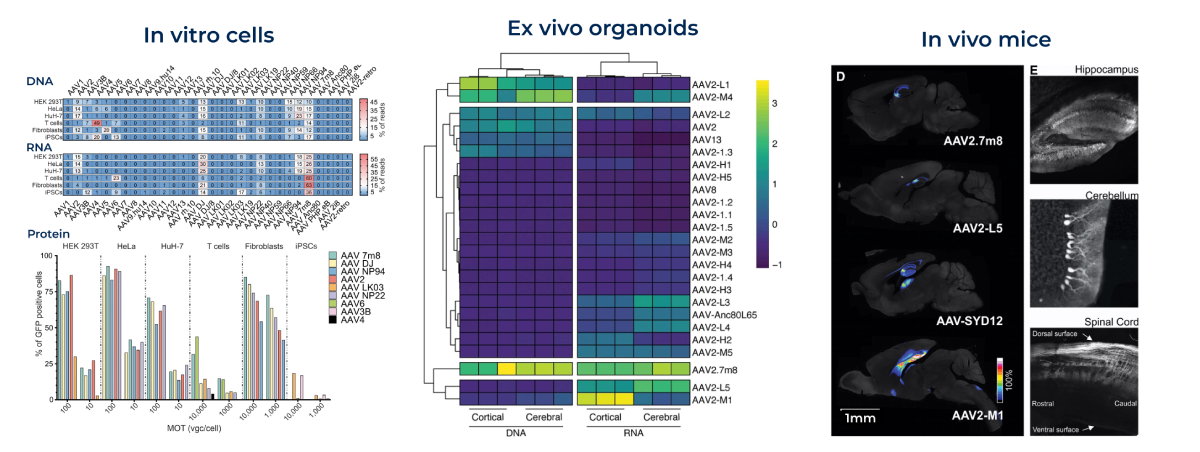Key Benefits
-
Broad serotype coverage with over 20 tropisms
-
Dual RNA/DNA analysis by NGS readouts
-
AAV entry and expression analysis performed simultaneously
-
Rapid, cost-efficient capsid selection using a proven model
-
Expert-validated capsid selection model
-
High-throughput and fully customizable screening
Service Details
We offer three distinct kit options:
- Pre-selected Tissue Tropism Panels: These kits feature optimized AAV serotypes chosen for specific tissues.
- Full Capsid Screening Panels: Comprehensive evaluation of all available capsids in a single experiment.
- Customizable Panels: Select from over a hundred pre-validated capsids to match your specific payload and research needs.
| Pre-selected Tissue Tropism Panels | |||
|---|---|---|---|
| Airway Epithelia (Lung) | Lymph Nodes | Vascular smooth muscle cells | T cells |
| Hepatocytes (Liver) | Leydig Cells | Endothelial Cells | Bone |
| Salivary Glands | Adrenal Glands | Inner Ear Cells (Ear) | Endothelial |
| Pancreatic Cells (Pancreas) | Renal Tissue (Kidney) | Retinal Cells (Eye) | Adipose |
| Small Intestine Cells (Gut) | Muscles | CNS | |
| Colon Cells (Gut) | Cardiomyocytes (Heart) | Human hematopoietic stem cells (HSCs) | |
The innovative design of these kits allows for flexible deployment across more than 20 tissue panels, including lung, liver, gut, heart, muscle, CNS, eye, and immune cells. This enables rapid, unbiased, and cost-effective screening of dozens to hundreds of AAV variants simultaneously. Further customization in vector design, including promoter and reporter gene selection, is supported by our Ph.D level technical team.

If you are interested in testing the kit, please feel free to contact us
Performance
-
Our AAV Capsid Screening Kits consistently deliver accurate performance across various models, including in vitro (cell lines, primary cells, iPSCs), ex vivo (organoids), and in vivo (mouse, xenograft, NHP) systems. This is supported by rigorous quality control that ensures consistent and dependable data, enabling confident AAV selection for all downstream applications.

Westhaus et al. Human Gene Therapy. 2020. Drouyer et al. Molecular Therapy: Nucleic Acids. 2024.



